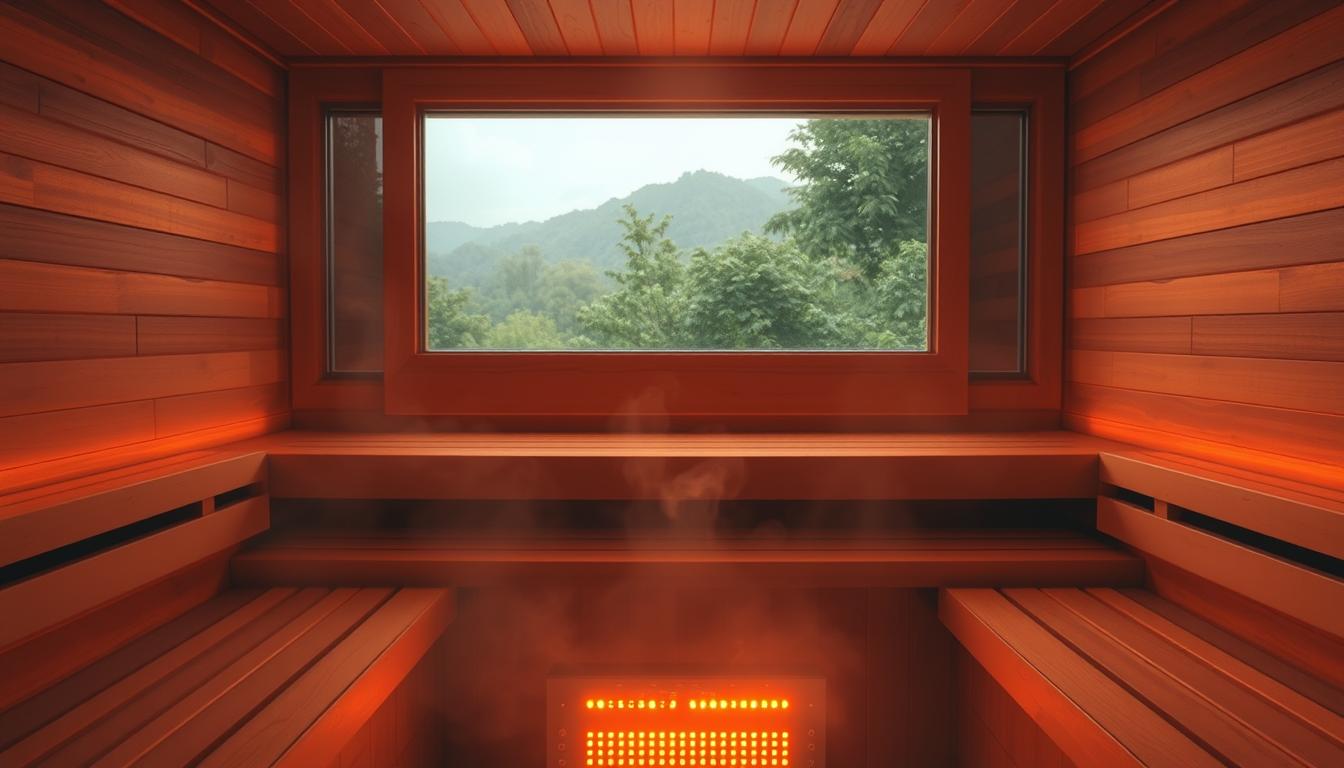
How Hot Do Infrared Saunas Get? Find the Perfect Temperature

Infrared saunas are gaining popularity for their unique approach to heat therapy. Unlike traditional options, they use light waves to warm the body directly. This creates a soothing experience at lower air temperatures.
The temperature range typically falls between 120°F and 150°F. That’s noticeably cooler than conventional saunas, which can reach up to 194°F. Yet, the benefits remain impressive, from relaxation to muscle recovery.
Finding the right heat level depends on personal comfort and wellness goals. Some prefer mild warmth, while others enjoy deeper heat penetration. Safety standards ensure these sessions stay effective and enjoyable.
Key Takeaways
- Infrared saunas operate at 120°F–150°F, milder than traditional options.
- Direct heat absorption offers deep warmth without extreme air temperatures.
- Adjustable settings cater to personal comfort and health objectives.
- UL-certified designs prioritize safety during sessions.
- Lower temps make sessions accessible for heat-sensitive users.
What Is an Infrared Sauna?
Modern wellness enthusiasts are embracing infrared technology for its therapeutic warmth. These units use electromagnetic waves to warm the body directly, unlike traditional sauna models that rely on heated air. The result? A cozy experience at lower ambient temperatures.
How Infrared Saunas Differ from Traditional Saunas
Infrared saunas operate on radiant heat, penetrating up to 1.5 inches into tissues. Conventional options use convection, heating the air to 150–185°F. Think of it like sunlight passing through a beach parasol—infrared bypasses the air to warm you deeply.
- Dry environment: No steam or high humidity like steam rooms.
- Faster warm-up: Reaches optimal temperature in 10–15 minutes.
- Private use: Designed for solo or small-group sessions.
The Science Behind Infrared Heat
Infrared waves in the 7–14 micron range match the body’s natural emissions. This "Vital Range" elevates core body temperature efficiently, mimicking sunlight’s warming effect. Clearlight Outdoor™ designs optimize this by retaining heat without overheating the space.
Both infrared and traditional sauna sessions create a "self-induced fever" response. But infrared achieves it with gentler air temps, making it accessible for heat-sensitive users.
How Hot Do Infrared Saunas Get? Temperature Ranges Explained
Understanding temperature ranges helps maximize infrared sauna benefits. These units deliver therapeutic warmth without extreme air heat, making sessions comfortable yet effective.
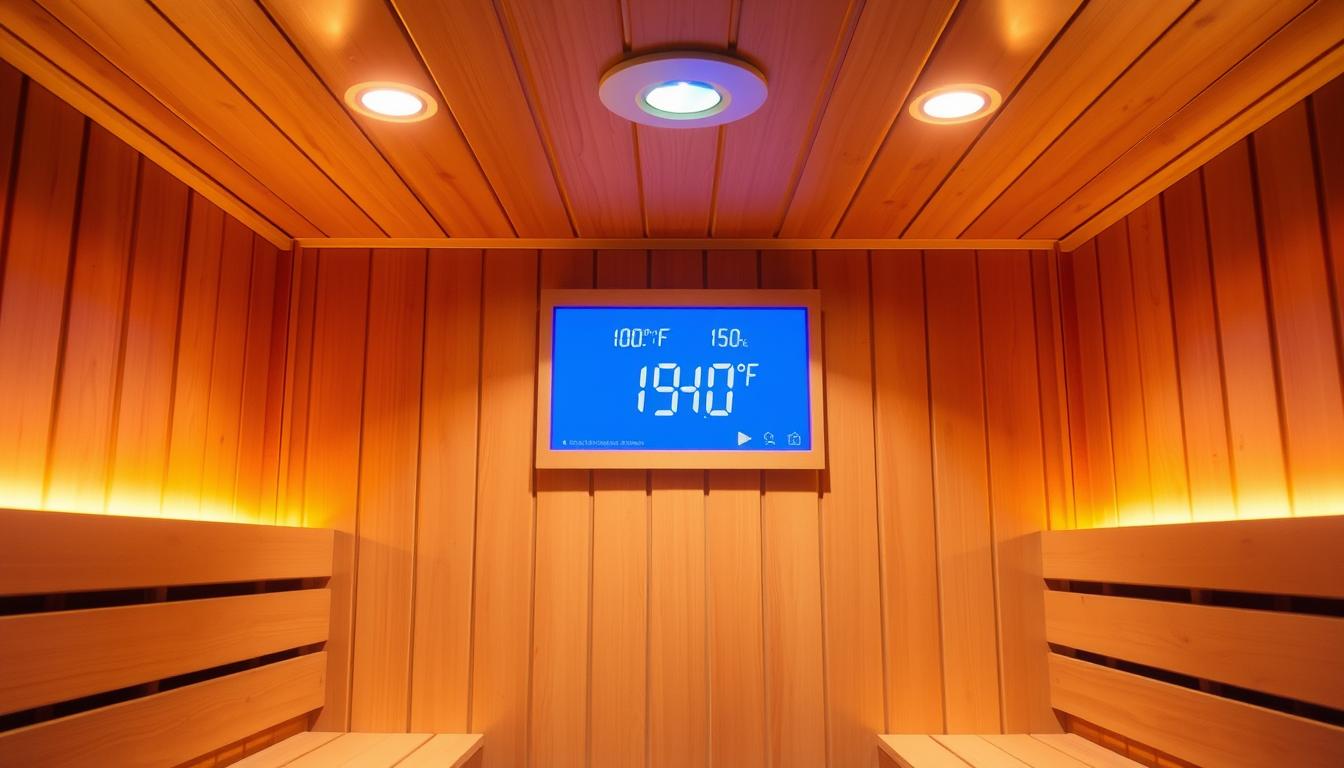
Typical Infrared Sauna Temperatures
Most models operate between 120°F and 150°F (49°C–66°C). This range elevates core body temperature gently, unlike traditional saunas that exceed 185°F (85°C).
Why the limit? Infrared panels focus heat on your body, not the air. At 160°F (71°C), safety sensors often activate to prevent overheating.
Why Lower Temperatures Feel Effective
Radiant warmth penetrates deeper than hot air. Think of sunbathing—the same air temperature feels hotter with direct light. Infrared works similarly, targeting muscles and tissues.
Canadian health guidelines recommend 30-minute sessions at these milder sauna temperatures. The result? Faster recovery and less strain on your head and lungs.
- Quick heat-up: Ready in 15 minutes vs. 40 for traditional models.
- Precision warmth: Adjust settings to match your comfort.
- Safety first: UL-certified designs prevent excessive heat exposure.
Infrared vs. Traditional Saunas: Key Differences
Choosing between traditional and infrared models involves more than just temperature preferences. Each type offers unique benefits, from heat delivery to operating costs. Let’s break down the contrasts to help you decide.
Temperature and Humidity Comparisons
Traditional saunas crank up the air to 150–185°F, creating a steamy environment. Infrared models stay cooler (120–150°F) but penetrate deeper with radiant warmth. Humidity also varies—traditional options often use water on rocks for steam, while infrared rooms stay dry.

- Heat-up time: Infrared reaches target temps in 15 minutes; traditional takes 40+.
- Humidity levels: Traditional saunas hit 10–20%; infrared stays below 10%.
- Space needs: Infrared fits in 4x4ft areas; traditional requires 5x7ft+.
Heating Methods: Air vs. Radiant Heat
Traditional units rely on a heater warming the air (convection), while infrared uses electromagnetic waves (radiation). Think of it like an oven versus sunlight—both warm you, but infrared skips the hot air middleman.
"Finnish sauna culture prizes the löyly steam ritual, but modern users often prefer infrared’s direct warmth."
Energy Efficiency and Heat-Up Time
Infrared wins here. A traditional 4.5kW heater costs $0.37/hour to run, while infrared uses 1.5–1.7kW ($0.10/session). Annual savings? Roughly $100 if you sauna 3x weekly.
| Factor | Traditional | Infrared |
|---|---|---|
| Energy Use | 4.5kW | 1.7kW max |
| Cost/Hour | $0.37 | $0.10 |
| Maintenance | Rocks, vents | Wipe-down panels |
Hybrid "InfraSauna" models now blend both technologies. They offer steam options with radiant panels—best of both worlds for purists and tech lovers alike.
Health Benefits of Infrared Sauna Temperatures
The gentle warmth of infrared saunas unlocks numerous wellness advantages. At 120–150°F, these sessions promote detox, recovery, and calm without extreme heat. Research confirms their effectiveness for diverse health benefits.
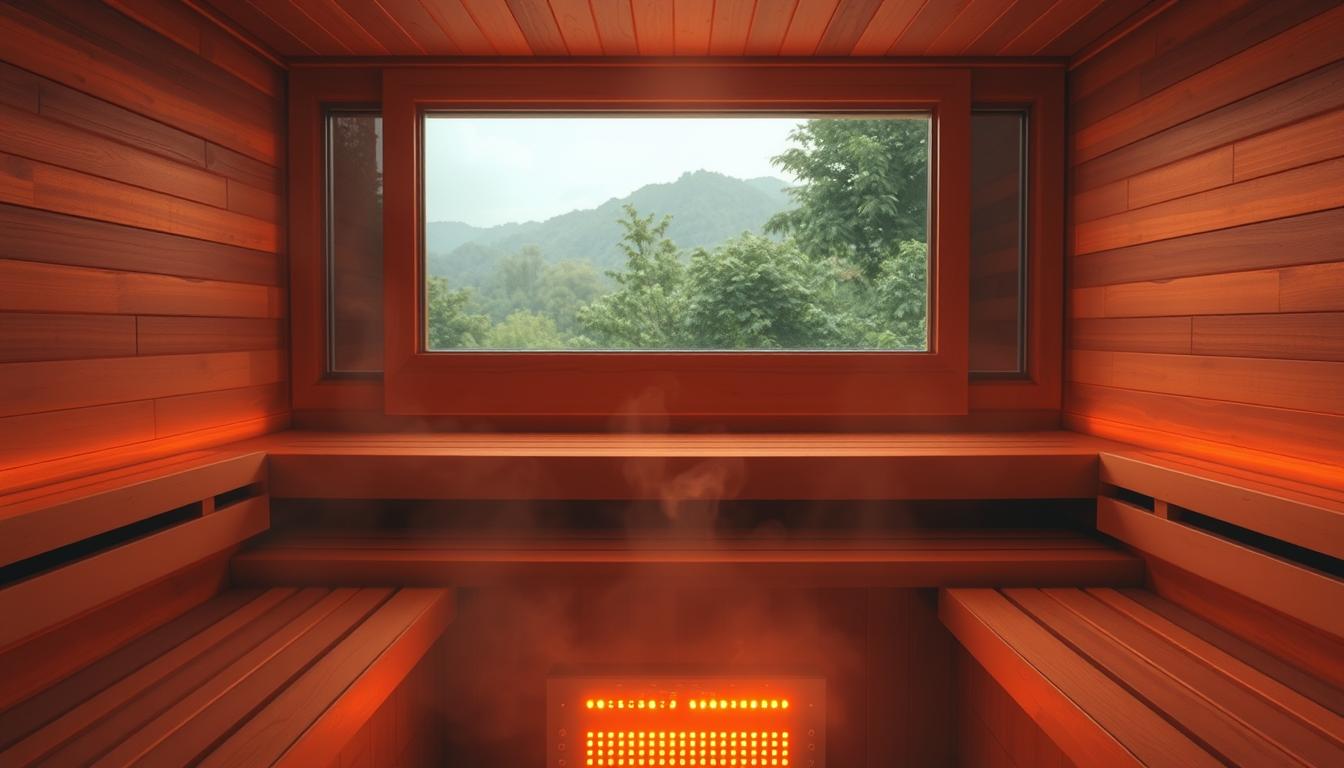
Detoxification and Sweating
Infrared heat triggers 2–3x more sweat than traditional options at 130°F. This optimal range releases toxins through pores without straining the heart. Heavy metals and pollutants exit efficiently.
Enhanced skin perfusion also helps manage conditions like eczema. A 2021 study showed 40% fewer flare-ups after regular use. Always hydrate—lower temps can mask fluid loss.
Muscle Recovery and Pain Relief
Set to 140°F, infrared penetrates muscles 1.5 inches deep. Athletes experience 30% less soreness post-workout. Nitric oxide production boosts circulation, speeding repair.
Chronic pain sufferers report relief too. The heat loosens stiff joints and reduces inflammation markers by 17%.
| Temperature | Primary Benefit | Ideal Session Length |
|---|---|---|
| 120°F | Relaxation | 25–40 minutes |
| 140°F | Pain relief | 20–30 minutes |
Stress Reduction and Relaxation
Just 30 minutes at 120°F cuts cortisol by 28%. The warmth activates the parasympathetic nervous system, easing tension. It’s like a warm hug for your nervous system.
Regular users sleep better and report higher resilience to daily stress. The effect rivals meditation for calming the mind.
"Infrared therapy’s ability to lower stress hormones while improving circulation makes it a dual-action wellness tool."
Finding Your Ideal Infrared Sauna Temperature
Your perfect sauna session depends on finding the right heat balance. Unlike one-size-fits-all settings, infrared warmth adapts to your body and goals. Start low, then adjust based on comfort and wellness targets.
Factors That Influence Your Comfort Level
Several factors shape your ideal temperature. Body composition matters—higher BMI may require lower heat to avoid overheating. Medications like beta-blockers can affect sweat response too.
Room conditions play a role. Keep ambient space temperatures at 68–72°F for optimal efficiency. Seasonal changes also matter—winter sessions often feel cozier at higher settings.
- Heater type: Carbon panels warm up faster than ceramic (10 vs. 20 minutes).
- Hydration: Drink 16oz of water pre-session to tolerate heat better.
- Goals: Weight loss? Aim for 135°F. Sleep support? 125°F works best.
Adjusting for Beginners vs. Experienced Users
Newcomers should start at 110°F for 10 minutes. Track sweat rates and recovery in a journal. Increase by 5°F every 3 weeks until reaching 130–140°F.
Seasoned users often prefer 145°F+ for deep tissue relief. Athletes leverage these temps for muscle recovery. Listen to your body—discomfort means dialing back.
"Infrared therapy’s flexibility allows customization for every user, from heat-sensitive individuals to performance seekers."
| User Type | Starter Temp | Max Temp |
|---|---|---|
| Beginners | 110°F | 130°F |
| Intermediate | 130°F | 145°F |
| Athletes | 140°F | 150°F |
Safety and Comfort Tips for Infrared Sauna Use
Your body sends clear signals during heat therapy. Learning to interpret them ensures safe, enjoyable sessions. These protocols help maximize benefits while minimizing risks.

Smart Hydration Practices
Drink 16oz of water 30 minutes before entering. During sessions, sip 8oz every 15 minutes—like replenishing after intense exercise. Electrolyte-enhanced options work better than plain water for longer use.
Signs of dehydration include:
- Dry mouth or sudden thirst
- Muscle cramps in calves
- Dark yellow urine post-session
Recognizing Your Limits
Overheating manifests in distinct ways. Stop immediately if you experience these warning signs:
| Overheating Signs | Action Required |
|---|---|
| Nausea or dizziness | Exit and sit in cool area |
| Rapid pulse (140+ bpm) | Drink cool water slowly |
| Headache behind eyes | Apply cold compress to neck |
Special Considerations
Certain individuals should avoid high temperatures or consult doctors first:
- Pregnant women (risk of fetal overheating)
- People with metal implants (heat conduction)
- Autoimmune conditions like lupus (symptom flares)
"Gradual cool-down preserves benefits—step out slowly, hydrate, and rest for 10 minutes before showering."
Post-session, moisturize skin to protect sensitive tissue. Aloe vera gels soothe while locking in hydration. Teens should limit sessions to 100°F maximum.
Infrared Saunas for Home Use: What to Know
Transforming a corner of your home into a wellness retreat starts with the right sauna setup. Residential units offer daily relaxation without gym visits. Key decisions involve model types, spatial needs, and safety features.
Choosing the Right Size and Model
Pre-built cabins suit small spaces, while custom designs fit unique layouts. Consider these factors:
- User capacity: 1–2 person models need 4x4ft; 4-person units require 5x7ft
- Material quality: 8mm tempered glass retains heat better than thinner options
- EMF safety: Select units emitting <10mG at 6" distance
Setting Up Your Home Sauna Space
Proper installation ensures efficiency and safety. Follow these guidelines:
- Electrical needs: Dedicated 15A circuit for basic models; 20A for premium features
- Ventilation: Allow 1–2 air changes per hour to prevent moisture buildup
- Flooring: Waterproof surfaces like tile or vinyl handle sweat and spills
"Smart controls and sound systems should integrate seamlessly without causing electromagnetic interference with heater panels."
Maintenance is minimal—wipe carbon panels monthly with a microfiber cloth. Childproof sliding doors with magnetic locks for family safety. Your home sauna becomes a sanctuary with thoughtful planning.
Conclusion
Finding your ideal warmth level makes each sauna session more rewarding. The 120–150°F range suits most users, balancing comfort with deep health benefits.
Personal preference matters most. Start low, then adjust heat and duration gradually. Track how your body responds to different settings.
Compared to traditional options, these units offer cost-efficient warmth. Their lower operating temps save energy while delivering similar advantages.
Always consult a doctor if you have medical concerns. Safety ensures long-term enjoyment of your thermal retreat.
Like tuning a favorite shower temperature, discovering your perfect infrared sauna temperature creates lasting wellness rewards.
FAQ
What is the typical temperature range for infrared saunas?
Infrared saunas usually operate between 120°F and 150°F, lower than traditional steam saunas but still effective due to radiant heat.
Why do infrared saunas feel hot even at lower temperatures?
Infrared heat directly warms your body instead of the air, raising core body temperature efficiently without extreme air heat.
How does an infrared sauna compare to a traditional sauna?
Infrared saunas use light waves for deep heating, while traditional saunas rely on steam and hot air, requiring higher ambient temperatures.
Are there health benefits to using lower-temperature infrared saunas?
Yes! Lower temps still promote detoxification, muscle recovery, and stress relief while being gentler on the body.
How long should a session last for beginners?
Start with 10–15 minutes at 120°F–130°F, gradually increasing time and heat as your body adapts.
Can infrared saunas help with pain relief?
Absolutely. The penetrating heat soothes muscles and joints, reducing inflammation and improving circulation.
What safety precautions should I take?
Stay hydrated, limit sessions to 20–30 minutes, and exit if you feel dizzy. Consult a doctor if you have heart conditions.
Are home infrared saunas energy-efficient?
Yes! They heat up faster and use less energy than traditional saunas, making them cost-effective for regular use.

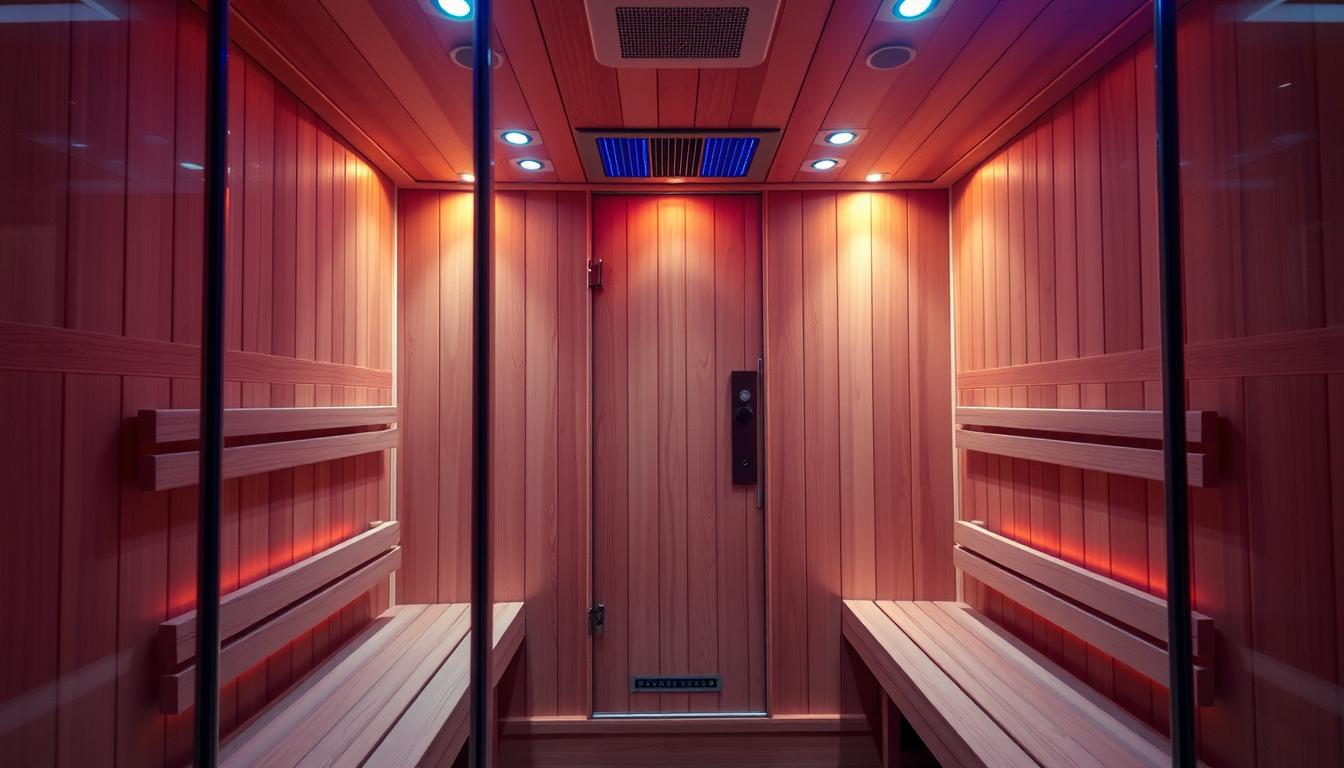
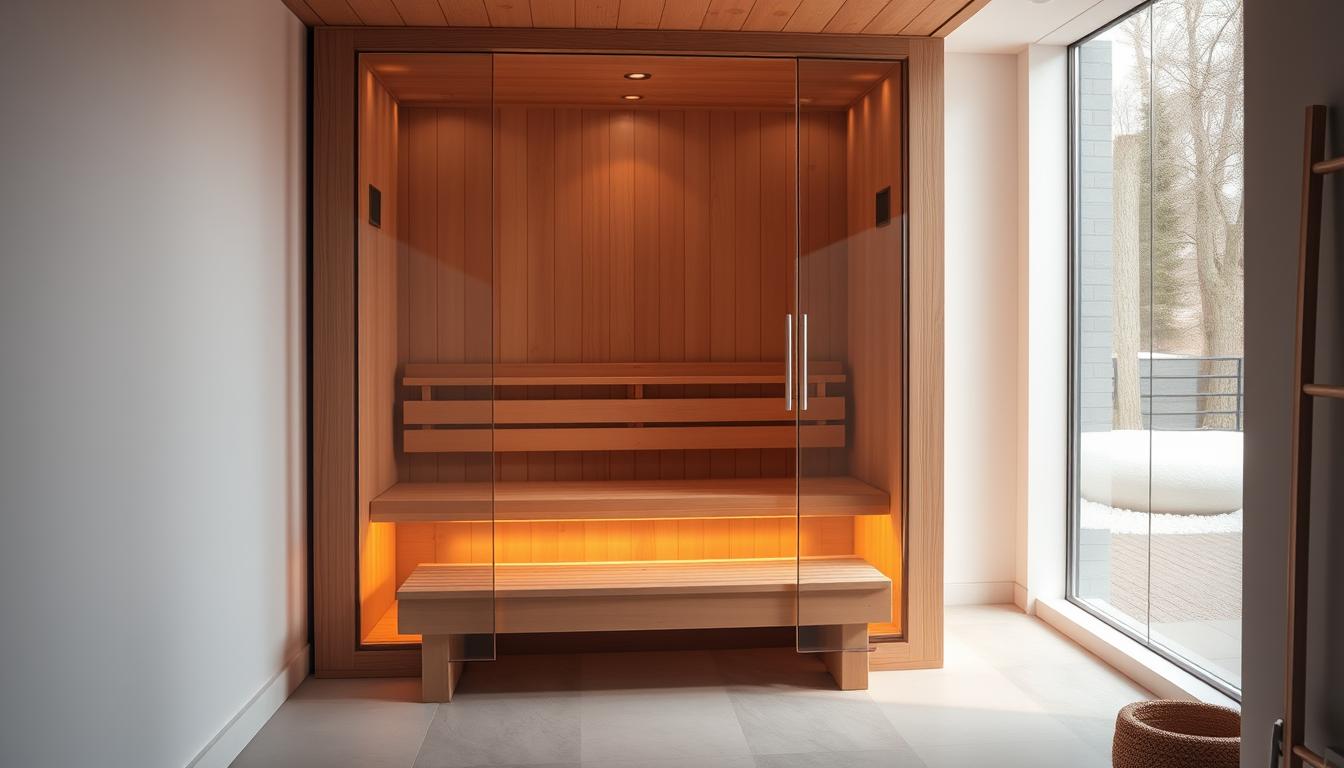

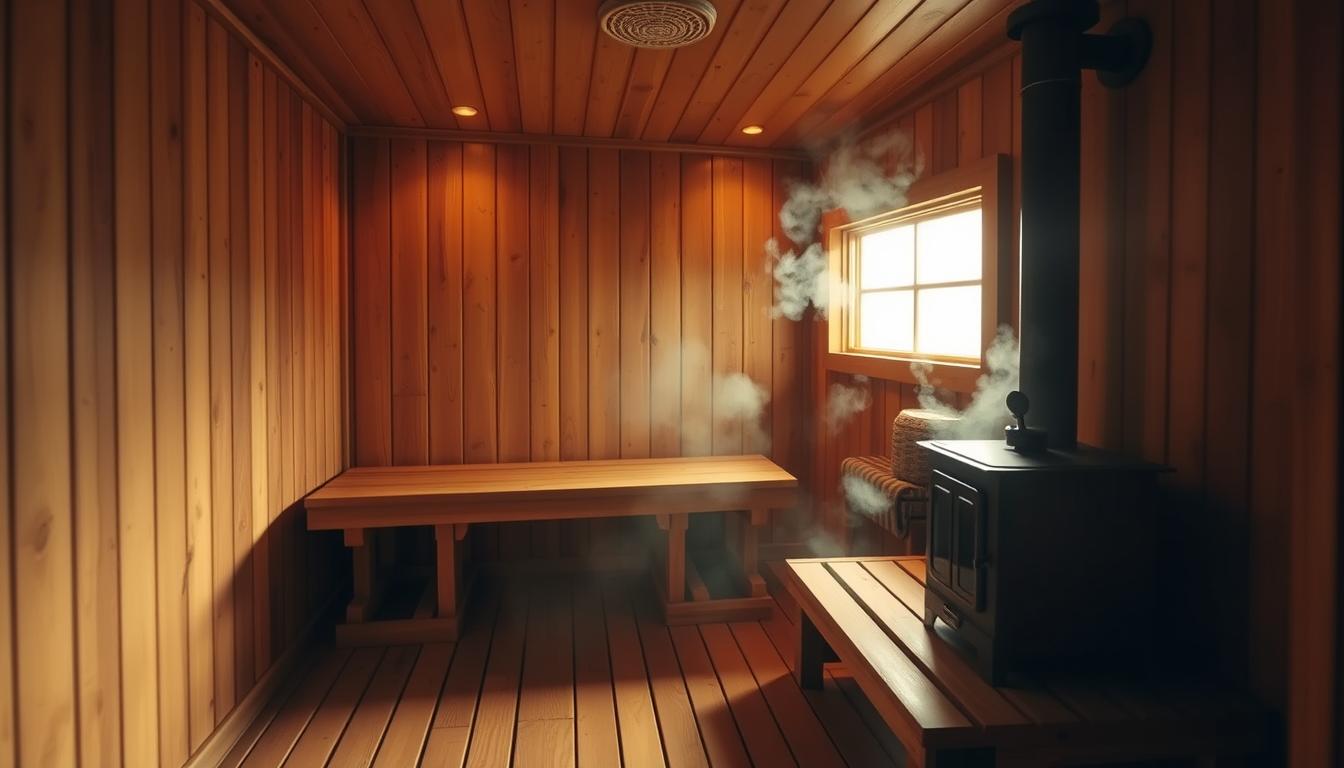

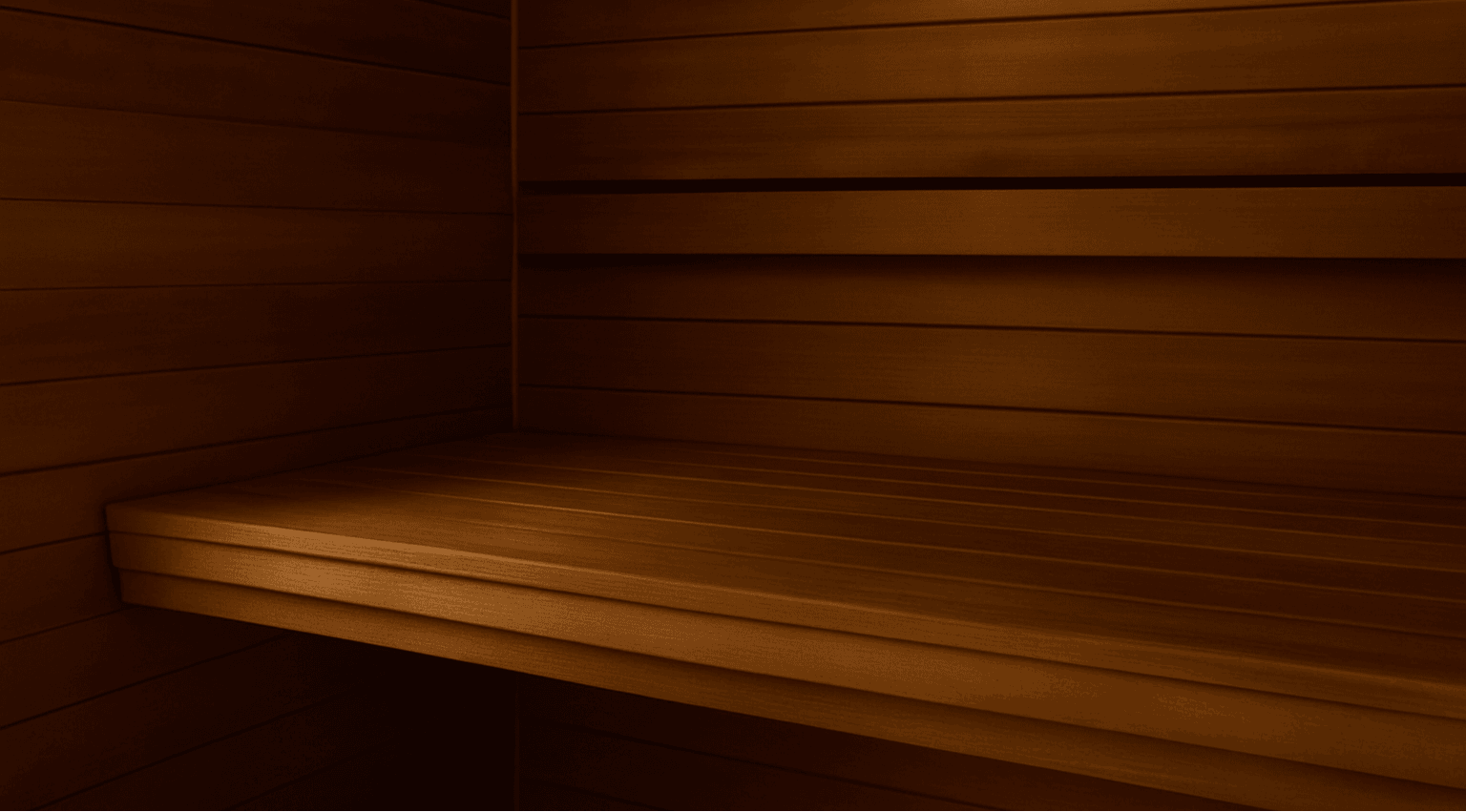
Leave a comment
This site is protected by hCaptcha and the hCaptcha Privacy Policy and Terms of Service apply.